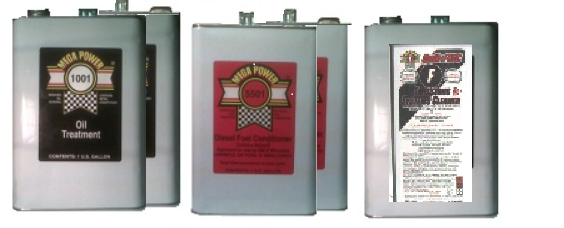TIPS TO:
WINTERIZING STABILIZING YOUR FUEL
FOR DAILY DRIVING PERFORMANCE
AND WINTER STORAGE.
Winterizing stabilizing your fuel for daily driving performance, for all winter long operating protection, anti-wear, to remove/avoid carbon deposits, and ready for all winter long fuel storage.
Contact info.... On a smartphone, to ask a question, order items listed, Email: megapower@grandecom.net Or Call Me...george at 512 665 3388.
Winterizing stabilizing your fuel story by David Gluckman Road & Track
Dec 18, 2017
Like a wine without a cork, gas can go bad when it sits around mingling with air. Fuel actually starts to turn nasty after 30 days. Since your car's fuel system is not an airtight container, precautions have if it's one that you tuck away for the winter.
The easy solution is an additive called a fuel stabilizer.What is this magic tonic stabilizing? It's trying to prevent oxidation.
Gasoline [and diesel fuels] can form gummy deposits and layers of varnish that gunk up any part of the fuel system they can reach.
[The reason?] Most gas contains some amount of ethanol, and that spells more trouble; ethanol is hygroscopic, meaning it attracts water from the atmosphere. Water and ethanol are corrosive, which is bad news for older tanks, fuel lines, and carburetors.
Ethanol [which is added in 10% or higher amounts to gasoline -]can also do nasty things to rubber seals. [What helps avoid these problems?]
A good stabilizer should prevent this badness [in daily driven vehicles, and in storage] for up to a year, and they're beyond simple to use. The hardest part is remembering to do it.
1. Pour [add into the gas or diesel fuel] per product instructions, in the right amount of stabilizer to treat a full tank of fuel. It's best if the tank is relatively empty, and that the gas inside hasn't already gone bad, which can happen in as few as 30 days.
More: Winterizing stabilizing your fuel story by David Gluckman Road & Track
WINTERIZING STABILIZing YOUR FUEL AND MOTOR
to prevent winter HARM [in daily driven vehicles, and in storage] mEGA POWER FUEL ANd motor treatment provides beyond MAXIMUM PROTECTION. The hardest part is remembering to do it. Shown here... Click picture for details.
More: Winterizing stabilizing your fuel story by David Gluckman Raod & Track
2. Top the tank off with fuel. This mixes the stabilizer up with nice fresh gas, reduces the amount of the tank that's exposed, and dilutes whatever bad gas might be still in the tank. Less air space for water to get in, less oxidation and corrosion.
3. Run: You're not done yet. Run the engine for the amount of time recommended on the bottle—usually five to 10 minutes. This ensures that the additive has reached all parts of the engine and fuel system, not just the gas tank
Gasoline with Ethanol [GETTYJOE RAEDLE/GETTY IMAGES Picture placement]
While you're at it, put some in your lawnmower for the winter, and then stabilize any fuel you have left in jerry cans. Better yet, stick the excess fuel in your daily driver so it's not sitting in the garage collecting ingesting water all winter.
For storage beyond a year, it might be better to drain the vehicle completely of fuel and dry out the lines, although that could bring up other issues: dried seals, and the like. If you can run the engine yearly and re-up on fresh gas and stabilizer, that'll work as well.
Come springtime, the engine should start right up with no hassle. Or at least the same amount of hassle it took before storage.
More: Winterizing stabilizing your fuel story by David Gluckman Raod & Track
